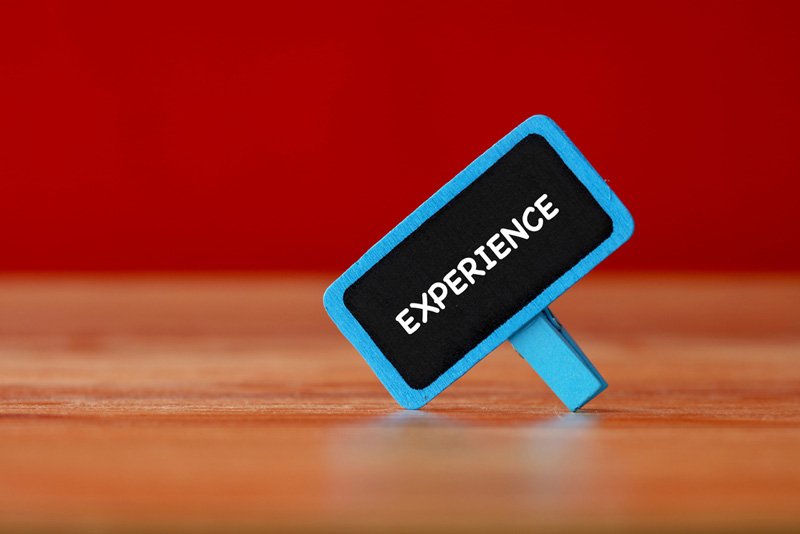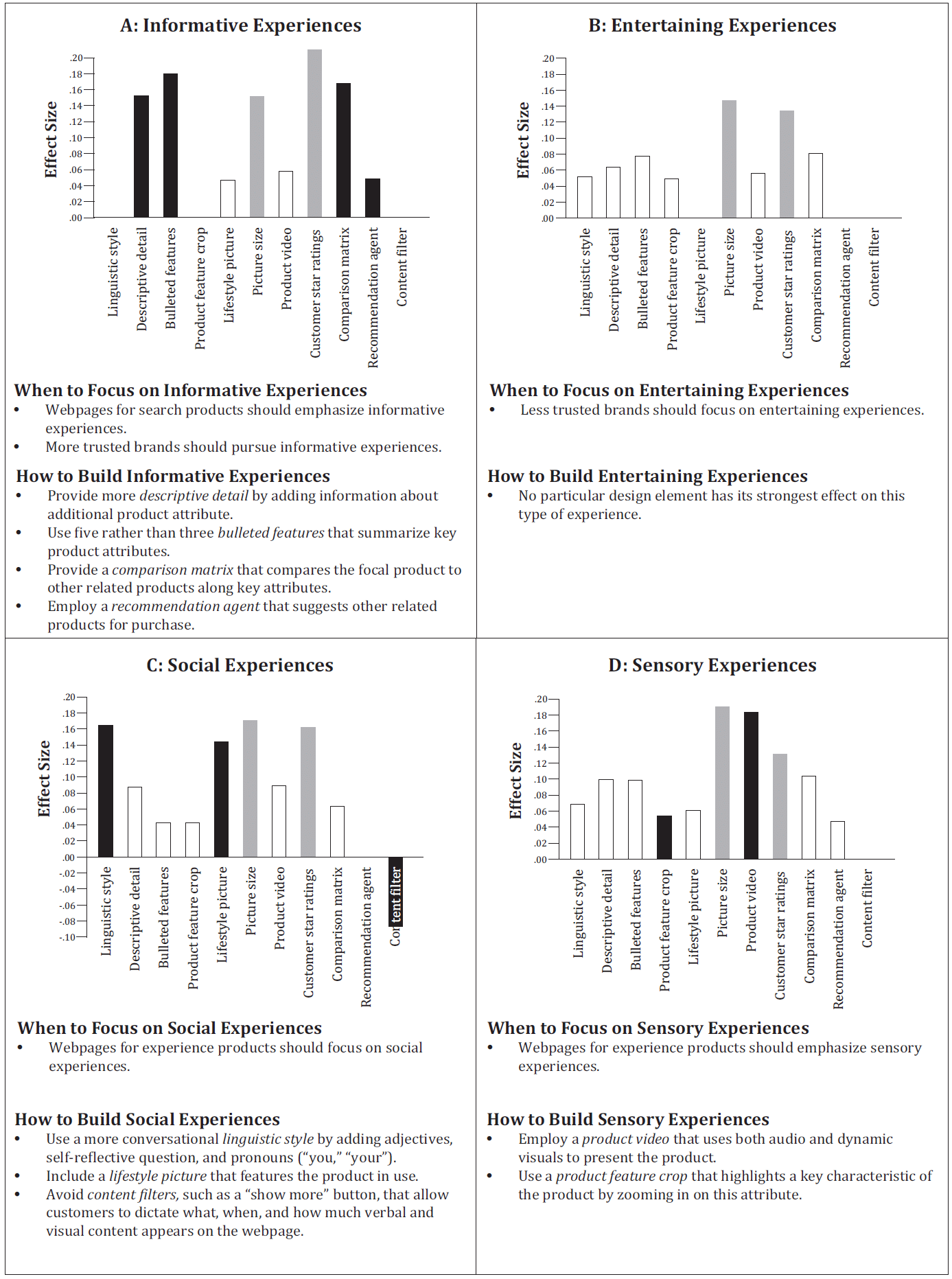
There is a lot of debate around the definition of customer experience. Despite intense marketing research there is for instance still no valid scale to measure it. Seeing a paper on online customer experiences published in the Journal of Marketing was therefore an exciting event for me. It’s entitled “Creating Effective Online Customer Experiences” and is authored by 3 scholars : Alexander Bleier, Colleen M. Harmeling, and Robert W. Palmatier.
This piece of marketing research is extremely robust (I won’t go into the details here but it’s a gem of methodology) and will help you understand the 4 dimensions you can use to build a compelling online customer experience, and how to actually design a webpage to score well on those 4 dimensions. Since the paper is not the easiest to understand, feel free to ask questions if there is something you don’t understand.
The 4 dimensions of online customer experience
The authors define 4 dimensions of online customer experience :
- informativeness
- entertainment
- social presence
- sensory appeal
I must say the “entertainment” and “sensory appeal” dimensions sounded kind of odd to me but the authors develop a convincing argumentation
- informativeness : the contribution of the webpage to helping the visitor make a decision. As such it is therefore a cognitive dimension.
- entertainment captures the pleasure offered by the webpage. It’s an affective dimension.
- Social presence has nothing to do with social media. Rather it refers to “the warmth, sociability, and feeling of human contact that a web page confers”. It is a social dimension.
- sensory appeal can be developed in an online environment through imagery. Obviously there are more possibilities to arouse senses in an offline environment, but pictures and videos can certainly be factors of arousal in an online environment. It is therefore a sensory dimension.
2 types of products and 2 types of design elements
Crafting a webpage to create a compelling online customer experience requires that you identify which elements of the webpage are worth improving. Luckily the authors have identified 13 design elements based on a literature review spanning 10 years of marketing research. Those 13 elements were then categorized along 2 dimensions : verbal elements and visual elements.
In this research the authors also distinguish between what theyr call “search” and “experience” products. In they words the difference should be understood as follows : “the consumer can evaluate a product solely on the basis of factual information (search qualities) rather than needing direct physical experience (experience qualities)”.
Results : which dimensions should you emphasize to create compeling online customer experiences ?
The results of this research are extremely rich and it’s beyond the scope of this short article to go in depth. The authors distinguish for instance between less or more trustworthy brands, between search and experience products. Yet I want to offer you the best overview possible and motivate you to actually read the whole study. Let’s go to the results.
1st learning point : not all customer experience dimensions influence purchase intentions equally
Unsurprisingly the 4 dimensions don’t influence purchase intentions equally. It came however as a surprise (to me at least) that entertainment was the dimension most correlated to purchase intentions. Informativeness and socially ranked 2nd while sensory appeal came in 4th position. To sum up : if you sell products online, make sure your webpages are entertaining. Entertainment is your best ally to leverage sales. Don’t underestimate the effect of social presence (their effects have the same order of magnitude as informativeness). Chatbots may be a good way to convey that social presence.

The effects of the 4 online customer experience dimensions on purchase dimensions
2nd learning point : choose the right design elements to win the online customer experience battle
How do you actually enhance one of those 4 dimensions is the next question. And the authors also answer it (it’s the table below … I know it’s complicated but no panic you’ll get the essence of it in a few seconds). One striking conclusion is that there are 2 design elements that are strong on all 4 dimensions : picture size and customer ratings. It means that if you sell physical products online, you don’t want to mess up with your pictures and you certainly don’t want to forget customer ratings.

Coming back to our super important entertainment dimension, you can easily go through the table below and rank the factors by order of magnitude. Besides picture size and customer ratings, you may also want to include a comparison matrix and list products features with bullet points. You should be scoring well on the entertainment dimension if you do all that.
Conclusions
The paper “Creating Effective Online Customer Experiences” by Bleier, Harmeling, and Palmatier is definitely a milestone in marketing research I won’t repeat myself but we lack large empirical research on the topic and there is still much debate on the definition of customer experience. This paper, unlike others, brings some very concrete answers and offer practical insights for practitioners. One conclusion is obvious and should lead to straightforward actions : make sure you have large pictures of the products you are selling and that customer reviews are available. It’s obvious but the effect is proven. To make it easier for you to visualize what you should do, please also refer to the figure below which is part of the paper (credits go to the authors) and helps a lot to orientate one’s efforts. Ad as usual, if you need any help in understanding this paper or crafting your very own customer experience (be it online or offline), don’t hesitate to contact us.

Posted in Research.

